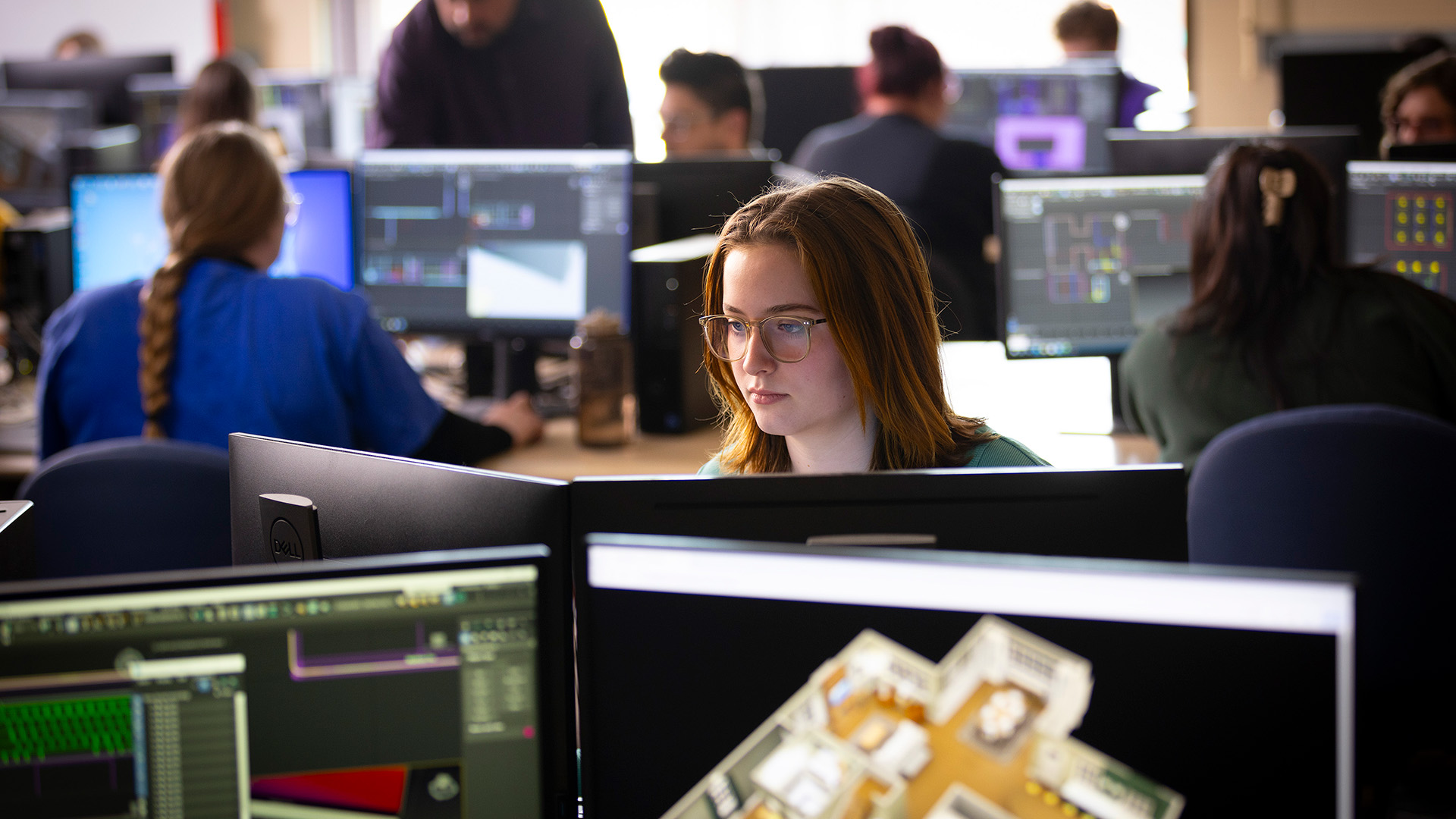
Bemidji State University is rebooting its computer science program for the future. A newly streamlined, student-focused program will continue to provide a traditional computer science foundation while creating new opportunities for specialized study in digital and user experience design. The new program will launch in fall 2025 in BSU’s innovative School of Technology, Art & Design.
Drew Graham, associate professor and chair of Bemidji State’s School of Technology, Art & Design, provided a key voice in the university’s early conversations about re-imagining computer science.
“Many of our design students have double-majored in computer science, and they’re some of our most successful graduates,” Graham said. “They go on from here and do amazing things. We have wanted a computer science and design combo for years, and this creates an opportunity for even more students to get that experience.”
According to Graham, BSU’s combination of traditional computer science and design will create opportunities for students that other schools cannot replicate. He says he knows of only one other undergraduate program in the country that offers a combined computer science and design curriculum.
“In most computer science programs, you don’t learn the front end,” he said. “This isn’t a game-design program, but this is as close as you can come to that without going into a specialized program. Our students will learn everything they need to know to code something, but then they can also design it. You have coding, 3-D modeling, designing interfaces, everything. It’s exciting.”
BSU’s current program includes a bachelor’s degree and a minor in computer science, emphasizing a traditional curriculum that trains students to examine complex situations, identify patterns and develop computational processes to solve or improve an approach to a problem.
The re-imagined program builds on a 30-credit core of traditional computer science courses, which includes foundational programming, database and development courses being carried forward from BSU’s current computer science curriculum. From that foundation, BSU’s new program will allow students to build their educational journeys on multiple paths: traditional computer science, or one of three new specialties in computer science and design, web design and user experience, or 3-D design and user experience. In addition, computer science is offered entirely on-campus, while the revised program will create new opportunities for students who wish to pursue online coursework.
Francois Neville, assistant professor of computer science, will be teaching many of the computer science courses and sees the value to students in what BSU will provide in the re-imagined program.
“I’ve greatly appreciated Drew’s drive and vision in re-imagining this program,” Neville said. “The School of Technology, Art & Design offers our computer science majors many valuable opportunities to enhance their skillsets and marketability, especially regarding front-end or interface design.”
Graham concurred while emphasizing that, in his experience, design companies typically don’t seek specialists when hiring new college graduates.
“They need someone who can do everything,” Graham said. “This degree will train a student to do so many different things, no matter what track they choose. With artificial intelligence tools, certain things are easier so it’s extremely beneficial to have multiple skill sets. This is where the world is going, and our graduates will be very employable.”
BSU’s current computer science students will have the option of completing their course of study using the current program catalog or moving into one of the new specialties when fall 2025 registration begins in March.
The relaunch stems from a fall 2024 announcement that BSU would close its computer science program as part of a broader initiative to address structural issues related to the university’s budget. Dr. Jeff Ueland, BSU’s interim provost and vice president for academic affairs, credited “layers of people” for the work done to reimagine the program for the future.
“Once the idea was presented, people on campus just rallied to it,” Ueland said. “The faculty came up with some creative and innovative ideas about how to carry this program forward into the future; admissions guided us about what prospective students are telling us they’re looking for; our Student Success Center worked to communicate with our current majors. So many people contributed to this. It’s been a team effort.”
Graham believes the new program will benefit the university and provide students with exciting new opportunities.
“We needed to revamp this program and do something fresh,” Graham said. “This is the kind of program students have asked for in the past we see a lot of crossover in the students who are interested in computer science and those who are interested in design. I can see a lot of students being interested in this program.”
